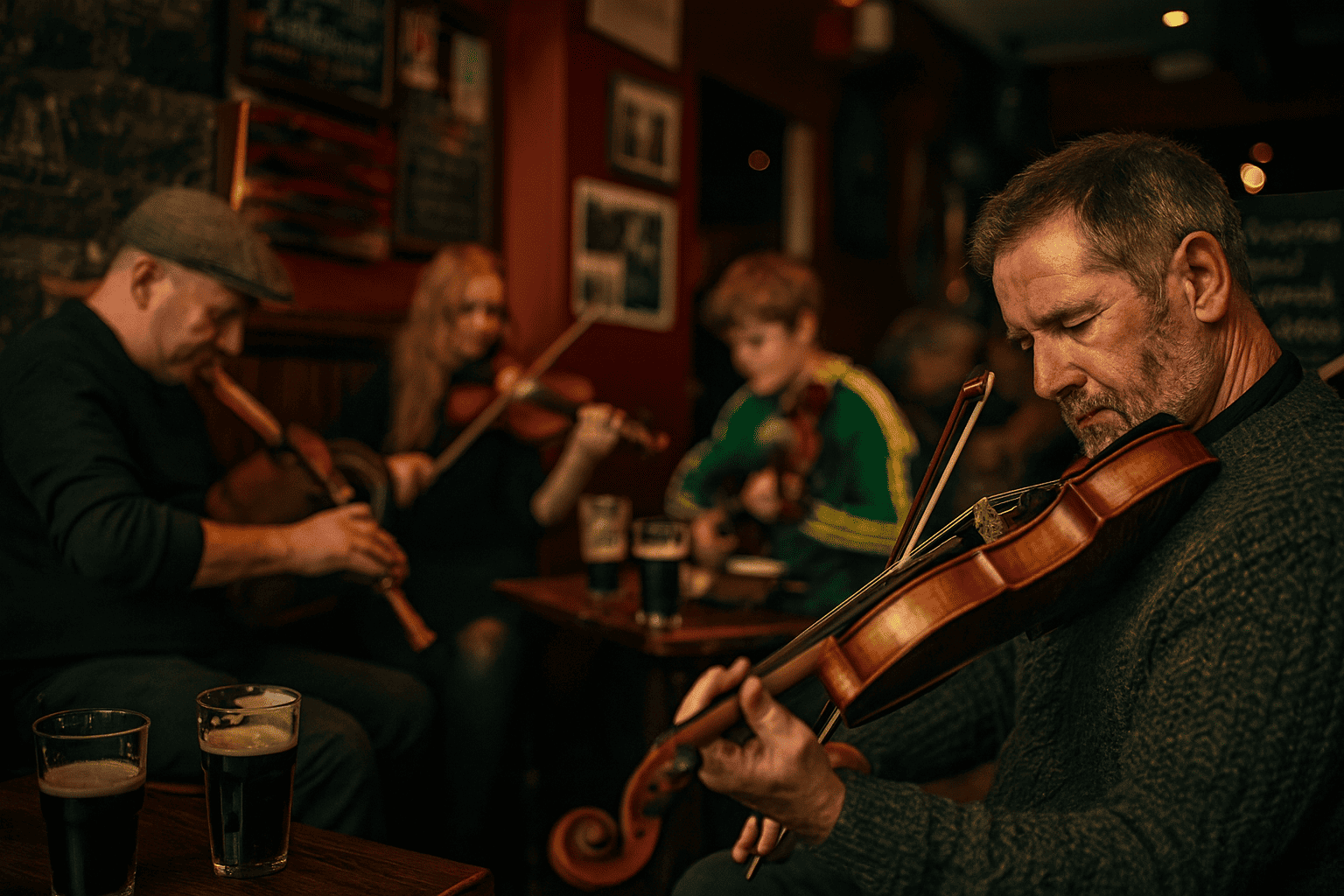A Music That Brings People Together
In Ireland, music is a shared story. It tells of ancient myths, the struggles of rebels, and the everyday joys and sorrows of the people. It embodies warmth, hope, and pride — so much so that anyone, whether Irish or a visitor, feels instantly part of this great sonic community.
As Dr. Sandra Joyce, former director of the Irish World Academy of Music and Dance, explains:
“What makes traditional music so special is the strong sense of community it builds. Musicians who don’t know each other at all often play together, simply for the joy of the music.”
Unique Experiences to Try
The best way to understand this culture is to live it. In Ireland, traditional music can be experienced everywhere:
- Catching an impromptu session in a pub like Tigh Cóilí in Galway
- Visiting the workshop of a master bodhrán maker, the iconic Irish drum
- Joining a dance workshop and learning to keep time with a jig or a reel
- Letting yourself be carried away by the energy of Fleadh Cheoil na hÉireann, the largest traditional music festival
At each encounter, you discover a new piece of this living culture.

Understanding the Sounds
Irish music doesn’t just play — it dances, breathes, and tells stories without a single word. The reel surges forward with its heartbeat-like “one-two, one-two,” while the jig leaps and skips, light as laughter, in its playful “one-two-three, four-five-six.” The hornpipe moves with gravity, steady and deliberate, as though each step carries history, while the polka spills over with joyful bounce, impossible to resist.
The instruments themselves feel alive: the fiddle soaring like a lark over rolling hills, the flute and tin whistle tracing bright ribbons of melody, the bodhrán keeping time like a pulse beneath the skin, the accordion adding its earthy swell, and the uilleann pipes releasing tones that ache with both sorrow and beauty. In a single tune, the music can shift from wild exuberance to intimate tenderness, mirroring the soul of Ireland itself.
The Social Soul of Music
To hear Irish music is to witness community. In Dublin’s legendary Cobblestone pub, in the warm acoustics of Glór in Ennis, or at a fireside in a Kerry cottage, the experience is never private. A seisiún (session) draws everyone in: masters of the craft, newcomers with a single tune in their pocket, and listeners who come not to consume but to belong.
Here, music is less a performance than a shared heartbeat. Its openness and inclusivity have made it a living treasure, honoured by UNESCO through the recognition of uilleann piping.
And in the North?
Ulster adds its own colour to the canvas. The Ulster Scots brought the thunder of the lambeg drum, the piercing call of the fife, and the proud spectacle of marching bands. Woven with fiddles and whistles, this northern soundscape is no less communal. From the soaring harmonies of gospel choirs to the clatter of kitchen dances, the music here overflows with warmth and energy. The polka and the hornpipe, in particular, send waves of rhythm through village halls and city streets alike, inviting anyone within earshot to join the dance.
Why Discover This Music?
Because it’s more than sound — it’s storytelling woven into melody. Each tune carries centuries of laughter and loss, rebellion and resilience. When a fiddle cries or a bodhrán beats, you’re not just hearing music; you’re stepping into Ireland’s living memory.
It’s history sung across generations, a culture preserved not in books but in voices rising together. To hear it is to feel a country reveal itself — in the tap of your foot, in the sway of a crowded pub, in the warmth of a shared chorus.
In Ireland, music does not wait for concert halls. It spills into cobbled streets, dances through village festivals, and turns strangers into companions over a pint. That’s why it lingers long after the last note fades — because it isn’t just unforgettable, it’s inseparable from the spirit of Ireland itself.
